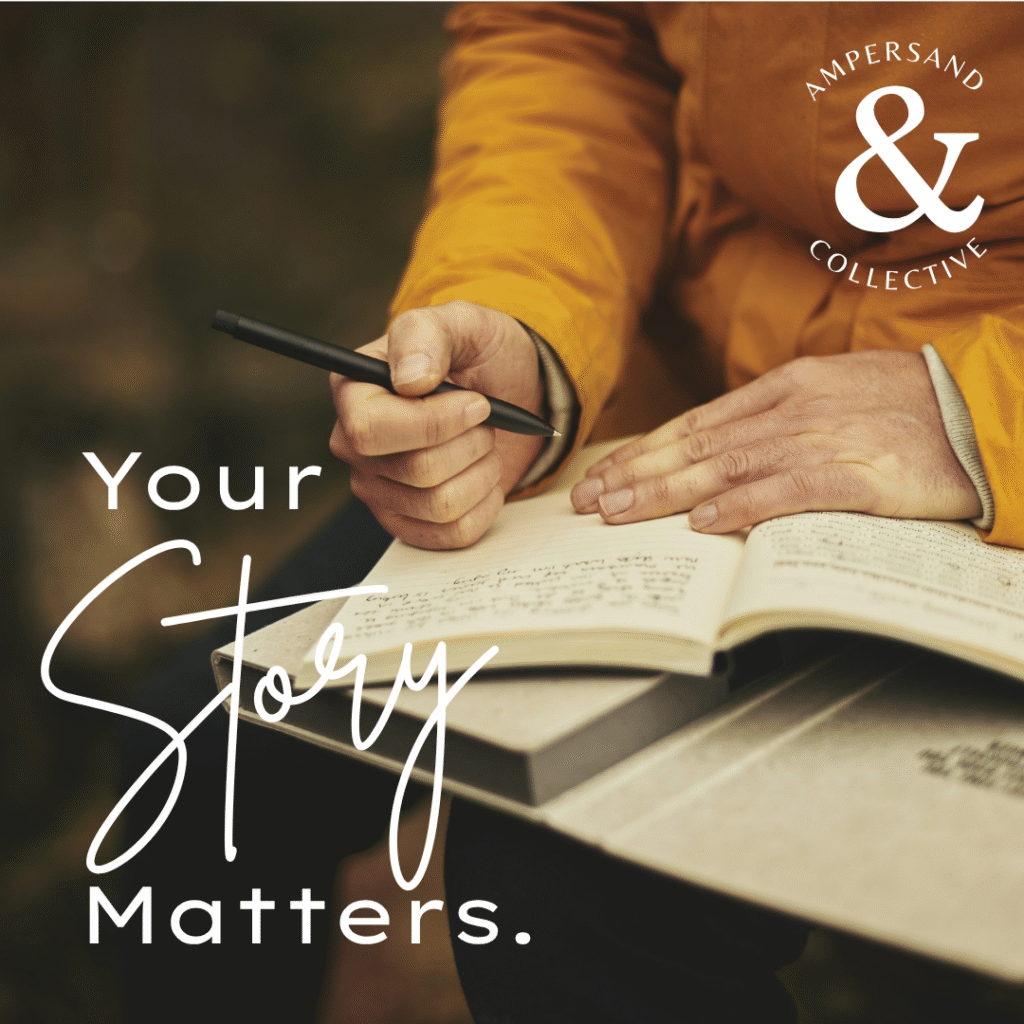The Importance of Story in Healing Work

It was often said during my training at the Allender Center that “we do not heal in generalities, but in the particularities of our story.” Simply put, our stories matter; the details of our experiences of harm and heartache are the pathway towards healing. Our stories of past pain and suffering are not meant to be “resolved” or “fixed;” they are meant to be heard and engaged in the presence of an attuned and kind other. Our stories need to be told. This is what is at the heart of Narrative Focused Trauma Care®, a.k.a. “story work,” and it is a modality that I use in my private practice.
Past & Present Collide: Attachment Styles
There is a haunting quote by William Faulkner that speaks to how our past is alive in the present, it is still impacting and influencing us. He writes, “The past is never dead; it’s not even past.” I have found this to be true time and time again when I work with people who have experienced childhood trauma–their past is alive in the present and guiding their thoughts and behavior seemingly unknowingly.
We are all shaped and formed by our past experiences. Sometimes the past “shows up” in the present in the way we interact with others and the kinds of relationships we find ourselves in. This is referred to as our attachment style or style of relating.
According to attachment pioneer John Bowlby and later theorists Mary Ainsworth and Mary Main, there are four attachment styles: secure, anxious, avoidant and disorganized. Secure attachment is the result of having caregivers who were aware of their own emotions and behaviors and consistently emotionally available to their children; this allowed the child to feel a sense of safety as well as valued and understood. Some of the signs of a secure attachment include: the ability to regulate your own emotions, comfortable being alone, the ability to trust others, high self-esteem, and emotional availability. Below are brief overviews of the three insecure attachment types from PsychCentral:
Anxious Attachment
- Also known as anxious-ambivalent or anxious-preoccupied
- Is the result of inconsistent caregivers that are not attuned to the needs of the child.
- Signs include:
- Low self-esteem
- Highly sensitive to criticism (perceived or real)
- Clingy tendencies
- difficulty being alone
- Intense fear of rejection or abandonment
- Feeling unworthy of love
Avoidant Attachment
- Also known as dismissive-avoidant or anxious-avoidant.
- Is the result of strict, emotionally distant or absent caregivers.
- Signs include:
- Avoiding emotional or physical intimacy
- Dismissive of others
- A strong sense of independence
- Difficultly trusting others
- Uncomfortable expressing emotions
- Spends more time alone than with others
Disorganized Attachment
- Results from childhood trauma, abuse and/or neglect.
- Caregivers were a source of fear and comfort, leaving the child confused and fearful.
- Signs include:
- Contradictory Behaviors
- High levels of anxiety
- Inability to regulate emtions
- Fear of rejection
- Difficulty trusting others
- Signs of both anxious and avoidant attachment styles
Ready to Begin?
Trauma therapist, author and podcast host Adam Young writes in his book Make Sense of Your Story, “Engaging your story is the single most important thing you can do to experience healing.”
If you are ready to dive into your story, email me at maggie@ampersandcollective.net to schedule a free 15 minute phone consultation or visit my website to learn more about 1:1 story work.
Or consider joining my Fall Story Circle Intensive to experience the healing power of story in community. I’m partnering with my dear friend and colleague from the Allender Center, Vanessa Sadler of Abiding In Story, to host a one-day virtual story group on Saturday October 25th, 9am-5pm. With a combination of large group instruction and small group story engagement, this one-day story intensive is great for folks who want a taste of Narrative Focused Trauma Care® as it was designed to be done: in community. Click HERE to apply.


Resource List:
Books I recommend for getting started with exploring your story:
- Dan Allender & Cathy Loerzel, Redeeming Heart: How Past Suffering Reveals Our True Calling, Zondervan Books, 2021.
- Bruce Perry & Oprah Winfrey, What Happened To You?: Conversations on Trauma, Resilience and Healing, Flat Iron Books, 2021.
- Adam Young, Make Sense of Your Story: Why Engaging Your Past with Kindness Changes Everything, Baker Books, 2025.
Additionally, these are great podcasts if you’re not big on reading:
- The Allender Center Podcast – Dan Allender and Rachael Clinton-Chen
- The Place We Find Ourselves Podcast – Adam Young

Leave a Reply